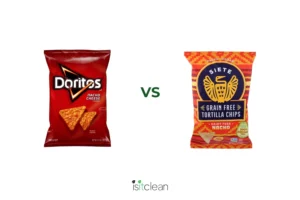
Acesulfame potassium is a zero-calorie sweetener that is added to many sugar-free…



Sulfites are a group of chemical compounds that contain sulfur dioxide (SO2) or sulfite ions (SO32-). They are commonly used as preservatives in the food and beverage industry due to their antimicrobial and antioxidant properties, such as in wine, dried fruits, and processed meats. Commercial production of sulfites involves oxidizing sulfur or sulfur-containing minerals to generate sulfur dioxide gas, which is then dissolved in water to form sulfurous acid. Sulfurous acid can be further neutralized to produce various sulfite salts, such as sodium sulfite or potassium sulfite. These sulfite compounds are then used as additives to prevent spoilage and browning in food products.

While most people can tolerate sulfites without any issues, some individuals may be sensitive or allergic to them. Sulfite sensitivity can manifest as symptoms ranging from mild to severe, including headaches, respiratory problems, hives, digestive issues, and in rare cases, life-threatening allergic reactions. Sulfites may cause the increased production of highly volatile compounds called free radicals, which could play a role in why people with asthma may have a higher sensitivity to sulfites. While more human research is needed, some sulfites have been shown to inhibit the growth of beneficial bacteria, thus indicating an effect on the microbiome. Sodium metabisulfite has been associated with negative health effects in rat studies, including affecting heart function, inducing apoptosis of gastric cells, and having a prooxidant effect in the liver and kidney. Due to many reported adverse reactions such as anaphylactic and asthmatic reactions with increased use of sulphites in the 1970’s and ‘80’s, the FDA banned the use of sulphites in fresh fruits and vegetables.
Health is like a bank account, certain ingredients make a deposit into your health bank, meaning they add to
your health. Certain ingredients withdraw from your health bank. We want health promoting ingredients in our diet. To keep things simple, we rate ingredients on a green, yellow, red scale:

It is naturally occurring in food and has no harmful effects on the body. It is real food. It is health promoting.

It goes into one or more of the below categories

It is known to have a harmful effect on the body (ex. All food colorings, Natural Flavors, MSG, Potassium bromate, aspartame, artificial flavors)



The Food Showdown: Popcorners flavors
Ingredient Rating: Canola oil – is it bad for you?
Clean Consuming: Nourishment for your

We have accomplished so much in just 1 year since our launch in March of 2023! We now have 10,000

The Nacho Chip Food Showdown, is Tapioca Starch safe in food? and a must-see documentary on America’s food system.
Stay in the know with the latest ratings, articles, and our newsletter, The Dirt.